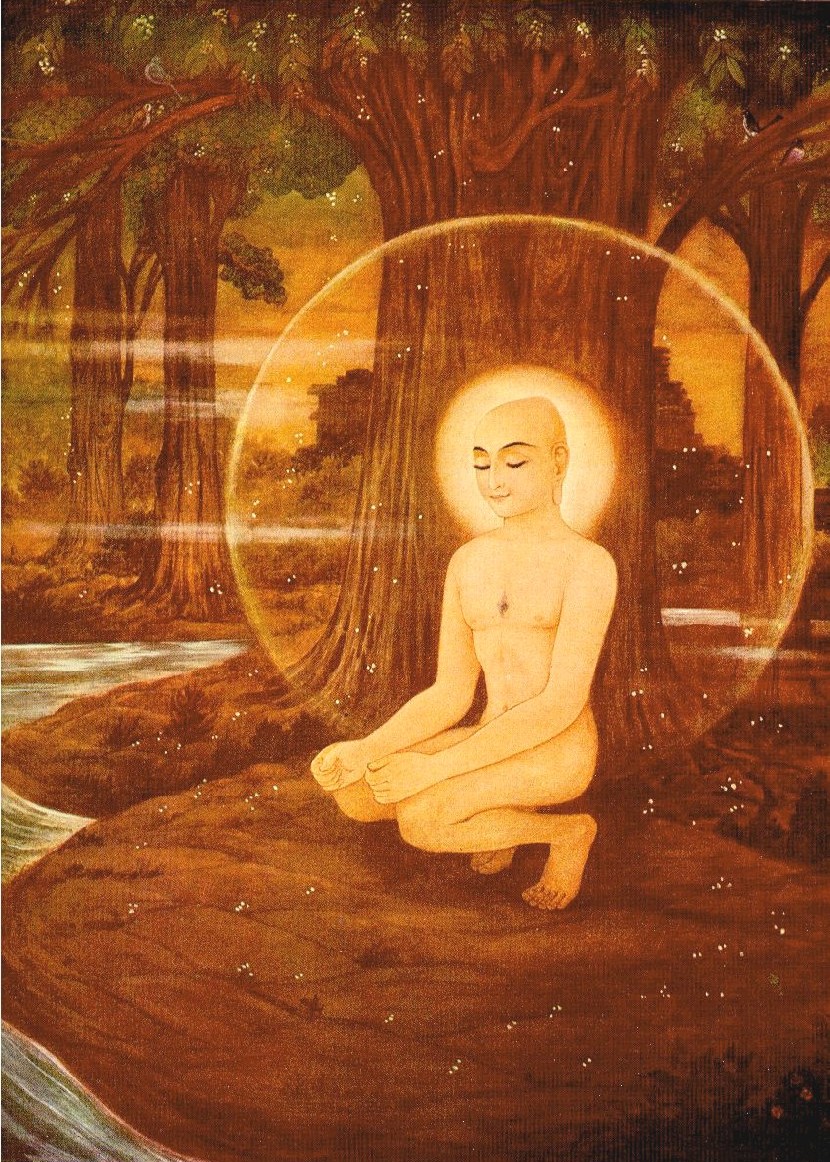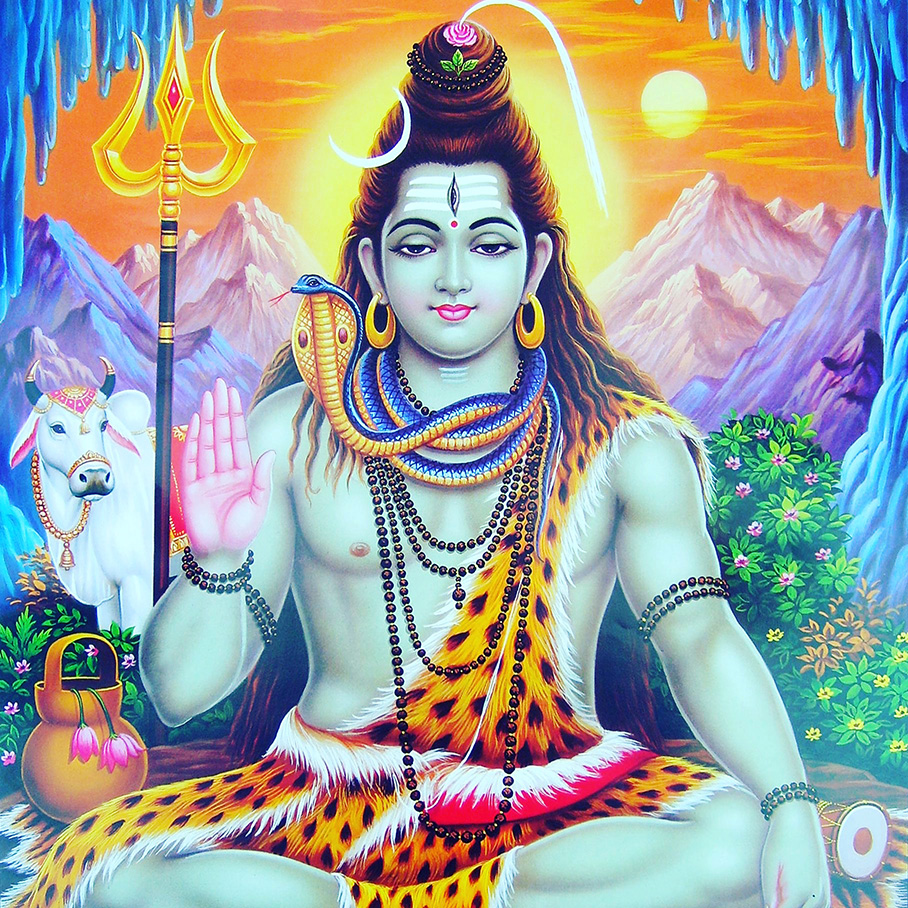Enlightenment

Enlightenment, Moksha, or Gnosis are words used to describe various forms of spiritual liberation, self-realization, and self-knowledge. In a general sense, it expresses a blissful state of existence of a human soul. It is most-commonly found in connection with the main Indian religions: Hinduism, Buddhism, and Jainism; however, it is also the expressed goal of numerous occult schools passed down from the early tradition of Gnosticism.
Nirvana and moksha, in all traditions, represent resting in one's true essence.
Etymology
The term enlightenment was popularised in the Western world through the 19th-century translations of British philologist Max Müller. It has the Western connotation of general insight into transcendental truth or reality. The term is also being used to translate several other Buddhist terms and concepts, which are used to denote:
- prajna (insight)
- vidya (knowledge)
- nirvana (release of disturbing emotions and desires)
- samyak sam bodhi (attainment of supreme Buddhahood)
Meanings
Despite having nearly identical meanings in English, terms such as moksha and nirvana differ and mean different states between various schools of Hinduism, Buddhism, and Jainism. The term nirvana is more common in Buddhism, while moksha is more prevalent in Hinduism and Jainism.
The abstract noun bodhi means the "knowledge" or "awakened intellect," of a Buddha. The verbal root budh- means "to awaken," and its literal meaning is closer to "awakening." Although the term buddhi is also used in other Indian philosophies and traditions, its most common usage is in the context of Buddhism.
Moksha is derived from the Sanskrit root word, muc, which means "to free" or "liberate." According to Jain scriptures, it is a combination of two Sanskrit words, moh (attachment) and kshay (its destruction).
Origin
It is unclear when the core ideas of samsara and moksha developed in ancient India, but they likely originated with new religious movements in the first millennium BCE. Moksha is traceable to yogis in Hinduism, with long hair, who chose to live on the fringes of society, given to self-induced states of intoxication and ecstasy, possibly accepted as medicine-men by ancient Indian society. Moksha to these early concept-developers, was the abandonment of the established order, not in favor of anarchy, but in favor of self-realization, to achieve release from this world.
The acceptance of the concept of moksha in some schools of Hindu philosophy was slow. These refused to recognize moksha for centuries, considering it irrelevant.
In Hinduism
Moksha in Hinduism implies a setting-free of hitherto fettered faculties, a removing of obstacles to an unrestricted life, permitting a person to be more truly a person in the full sense. The concept presumes an unused human potential of creativity, compassion and understanding which had been blocked and shut out. Moksha is more than liberation from a life-rebirth cycle of suffering (samsara), it also includes psychological liberation from fear and ignorance or anything that is not true knowledge.
Many schools of Hinduism see moksha as a state of perfection. The concept is a natural goal beyond dharma. Moksha, in the epics and ancient literature of Hinduism, is seen as achievable by the same techniques necessary to practice dharma. Self-discipline is the path to dharma, and moksha is self-discipline that is so perfect that it becomes unconscious, second nature. Dharma is thus a pathway to moksha.
In Jainism
In Jainism, moksha is a blissful state of existence of a soul, attained after the destruction of all karmic bonds. A liberated soul is said to have attained its true and pristine nature of infinite bliss, infinite knowledge and infinite perception.
Jains consider moksha to be the highest and the noblest objective that a soul should strive to achieve. In fact, it is the only objective that a person should have; other objectives are contrary to the true nature of soul. With the right view, knowledge and efforts all souls can attain this state. That is why Jainism is also known as mokṣamārga or the "path to liberation."
Nirvāna means final release from the karmic bondage. When an enlightened human, such as an Arihant or a Tirthankara, extinguishes his remaining karmas and thus ends his worldly existence, it is called nirvāna. Technically, the death of an Arhat is called their nirvāṇa, as he has ended his worldly existence and attained liberation. After death, a fully liberated soul dwells in Siddhashila with infinite faith, infinite knowledge, infinite perception, and infinite perfection.
In Buddhism
In early Buddhism, bodhi carried a meaning synonymous to nirvana, using only a few different metaphors to describe the insight, which implied the extinction of greed, hate, and delusion. Siddhartha Gautama, known as the Buddha, is said to have achieved full awakening, "perfect Buddhahood."
Among the many schools of Buddhism, there are many different concepts of enlightenment and how it may be achieved. In general, they all believe Bodhi is the realisation of the inseparability of samsara and nirvana, and the unity of subject and object. Attaining nirvāṇa is the ultimate goal of Theravada Buddhism. It involves the abandonment of the ten fetters and the cessation of suffering.
In Gnosticism
In Gnosticism, gnosis signifies a spiritual knowledge or insight into humanity's real nature as divine, leading to the deliverance of the divine spark within humanity from the constraints of earthly existence. The biblical serpent in the Garden of Eden was praised and thanked for bringing knowledge (gnosis) to Adam and Eve.
Early gnostic Christian doctrines rely on a dualistic cosmology that implies the eternal conflict between good and evil, and a conception of the serpent as the liberating savior and bestower of knowledge to humankind opposed to the Demiurge or creator god, identified with the Hebrew God of the Old Testament.
In Sufism
Gnosis in Sufism refers to knowledge of Self and God. The gnostic is called al-arif bi'lah or "one who knows by God". The goal of the Sufi practitioner is to remove inner obstacles to the knowledge of God. Sufism, understood as the quest for Truth, is to seek for the separate existence of the Self to be consumed by Truth, as stated by the Sufi poet Mansur al-Hallaj, who was executed for saying "I am the Truth" (ana'l haqq).
Techniques to achieve enlightenment
All Vedic religions agree on three key paths to achieve enlightenment, although they differ widely on the techniques which should be used to attaing this goal.
- Meditation
- Knowledge of religious texts
- Right conduct
